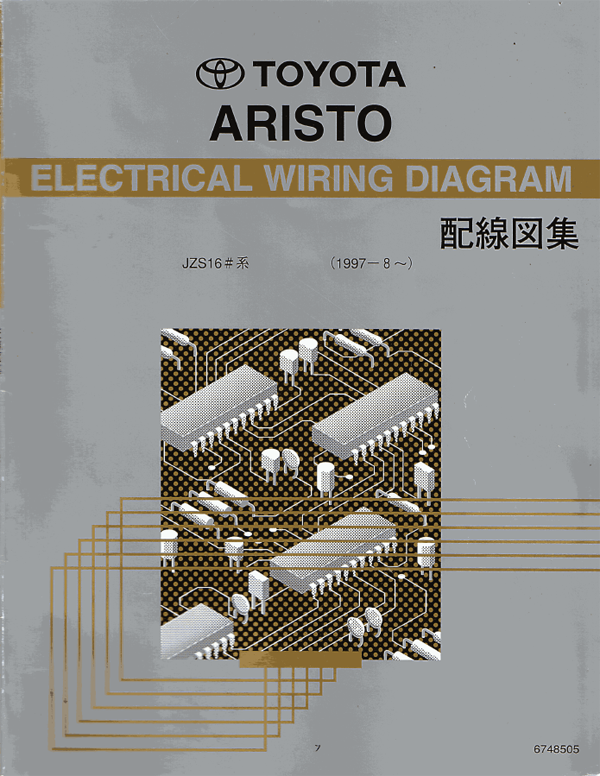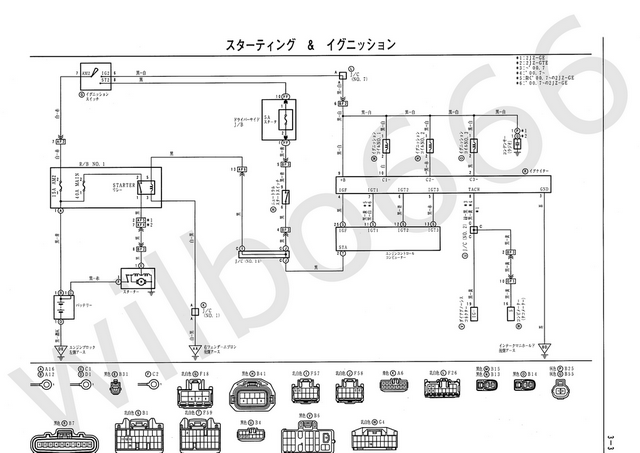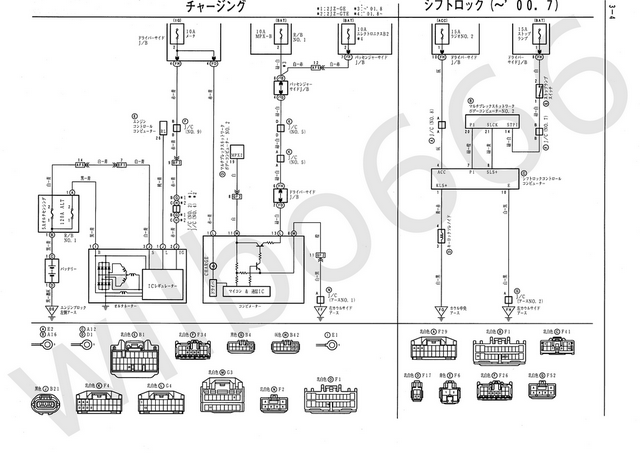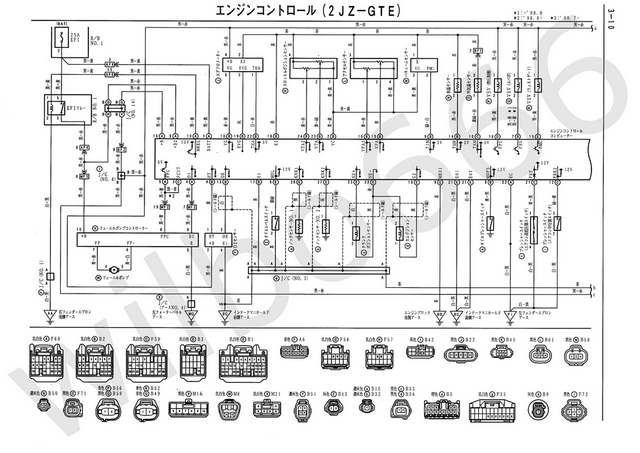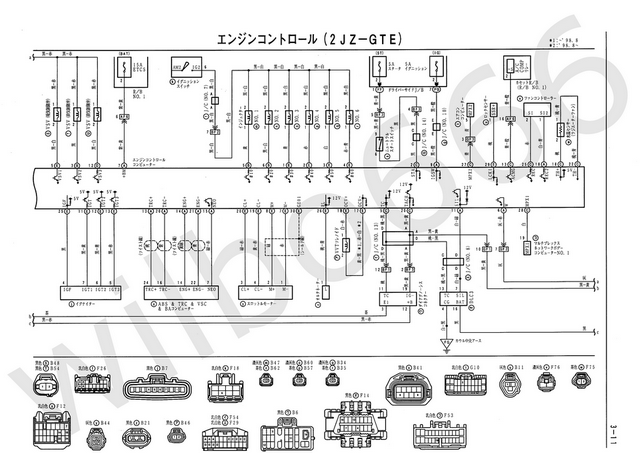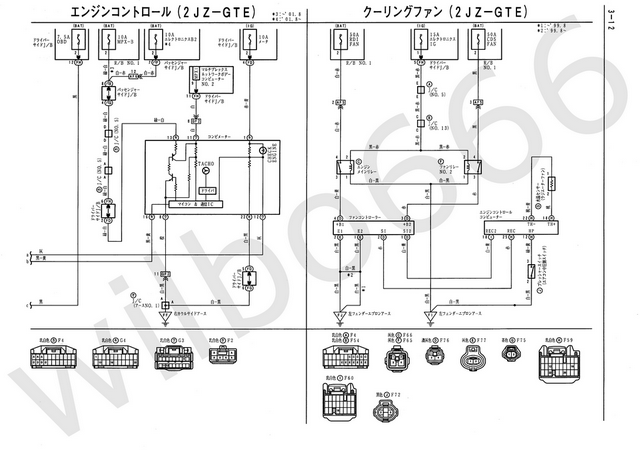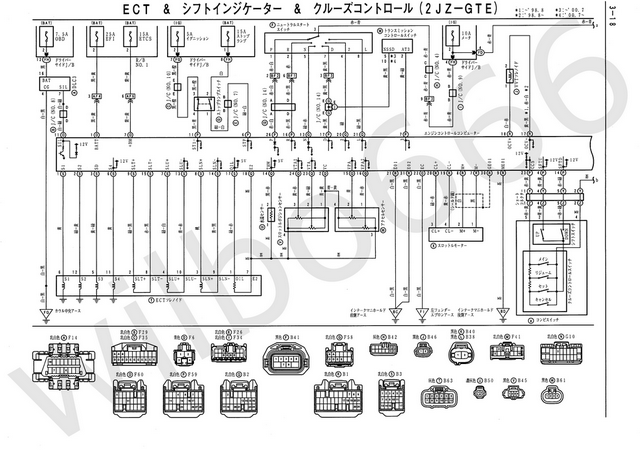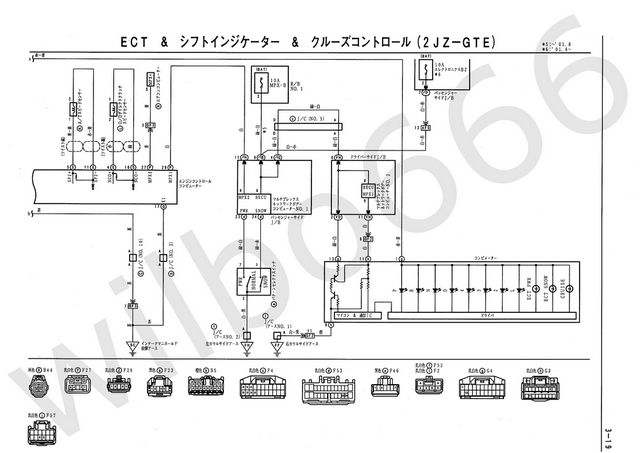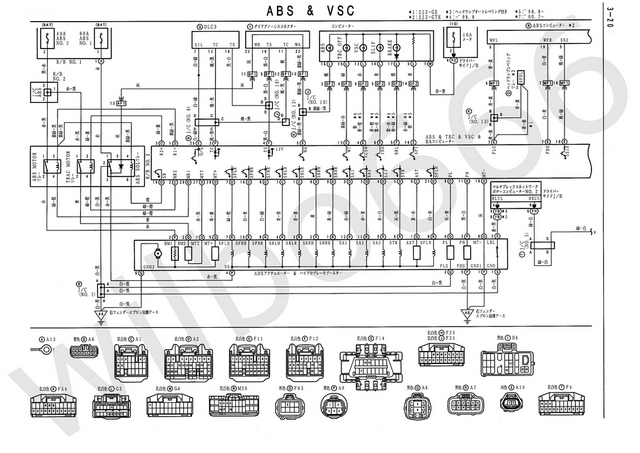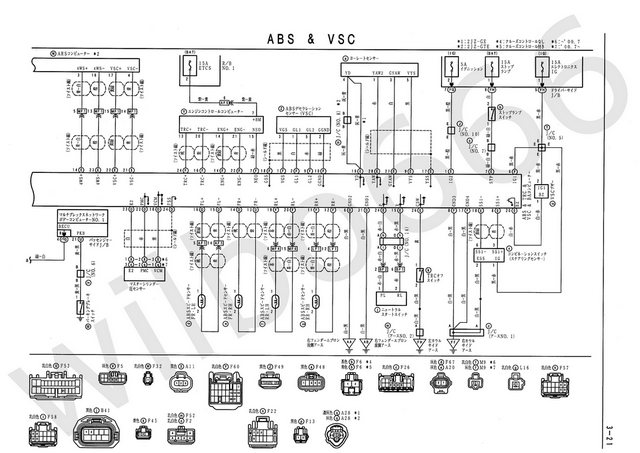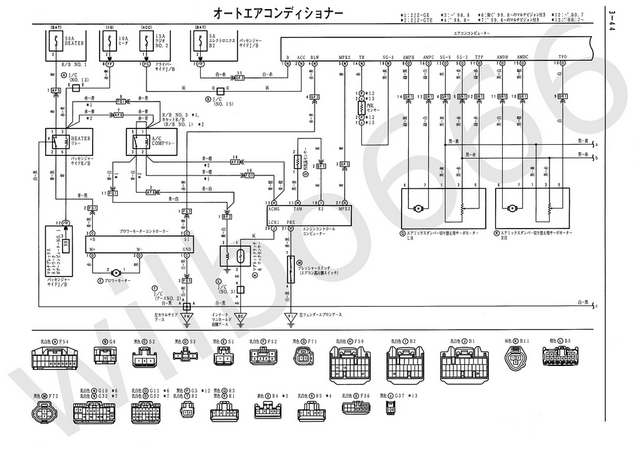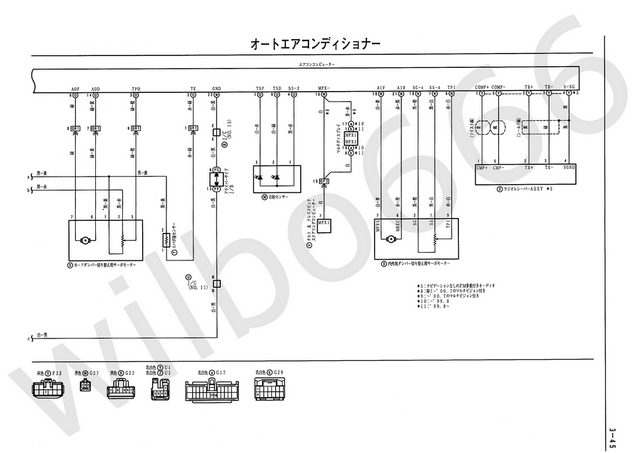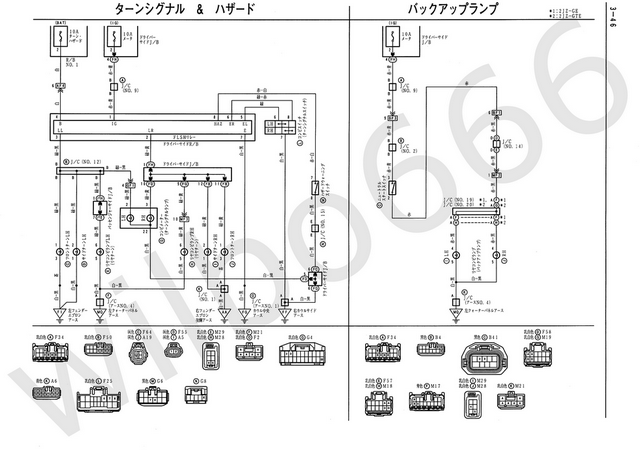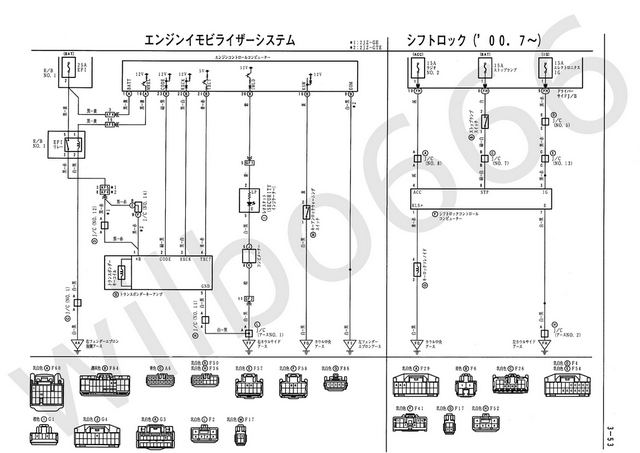| Plug |
Pin |
Symbol |
Definition |
Input / Output |
What |
Why |
How |
Link |
| B1 |
1 |
#30 |
No. 3 Injector |
Output |
This pin is used to control the No.3 fuel injector. |
The fuel injectors are electronically controlled by the engine ECU. |
This pin is connected to Ground inside the ECU as required to turn the fuel injector ON. The fuel injector should be wired with one side of the solenoid connected to battery voltage (Ignition switched) and one side of the fuel injector connected to this ECU pin. |
|
| B1 |
2 |
#40 |
Cyl 4 Injector Driver |
Output |
This pin is used to control the No.4 fuel injector. |
The fuel injectors are electronically controlled by the engine ECU. |
This pin is connected to Ground inside the ECU as required to turn the fuel injector ON. The fuel injector should be wired with one side of the solenoid connected to battery voltage (Ignition switched) and one side of the fuel injector connected to this ECU pin. |
|
| B1 |
3 |
#50 |
Cyl 5 Injector Driver |
Output |
This pin is used to control the No.5 fuel injector. |
The fuel injectors are electronically controlled by the engine ECU. |
This pin is connected to Ground inside the ECU as required to turn the fuel injector ON. The fuel injector should be wired with one side of the solenoid connected to battery voltage (Ignition switched) and one side of the fuel injector connected to this ECU pin. |
|
| B1 |
4 |
#60 |
Cyl 6 Injector Driver |
Output |
This pin is used to control the No.6 fuel injector. |
The fuel injectors are electronically controlled by the engine ECU. |
This pin is connected to Ground inside the ECU as required to turn the fuel injector ON. The fuel injector should be wired with one side of the solenoid connected to battery voltage (Ignition switched) and one side of the fuel injector connected to this ECU pin. |
|
| B1 |
5 |
VSV1 |
Intake Air Bypass Valve Vacuum Switching Valve |
Output |
This pin is used to control the VSV which is used to open / close the Intake Air Bypass Valve that is a component of the sequential turbo system. |
The Intake Air Control Valve allows pressurised air to exit the rear turbocharger allowing it to fully come online as part of the sequential turbo system. |
This pin is connected to Ground inside the ECU as required to turn the Intake Air Control Valve VSV ON allowing pressurised intake air to open the Intake Air Control Valve. One side of the VSV should be wired to this pin and one side of VSV should be wired to battery voltage (Main EFI Relay switched). |
|
| B1 |
6 |
MOL |
Main Oil Level Switch |
Input |
This pin is used to detect low engine oil level. |
This sensor is used for low oil level indication for the dash with the data being sent via the Multiplex network to the dash. It is unknown if this switch plays any part in the engine control algorithms. |
This pin connects to an oil level switch that is installed at the sump on the front, lower, intake side of the engine to detect low engine oil level. One side of the oil level switch should be wired to this pin and one side of oil level switch should be wired to ground (common ground located at the intake manifold). |
|
| B1 |
7 |
M- |
ETCS-i Motor |
Output |
This pin is used to control the electronic throttle control motor. |
The throttle is controlled by an electric motor that is controlled by the engine ECU. Having the throttle controlled by the engine ECU allows idle speed control, traction control, cruise control, etc to be built directly into the engine ECU simplifying the system. |
This pin is used together with the M+ pin to power the electric motor to allow it to be opened and closed by the engine ECU as required. The ETCS-i clutch must be engaged for the electric motor to be able to open or close the throttle. The M+ and M- pins are triggered by the engine ECU in a PWM fashion. |
|
| B1 |
8 |
M+ |
ETCS-i Motor |
Output |
This pin is used to control the electronic throttle control motor. |
The throttle is controlled by an electric motor that is controlled by the engine ECU. Having the throttle controlled by the engine ECU allows idle speed control, traction control, cruise control, etc to be built directly into the engine ECU simplifying the system. |
This pin is used together with the M- pin to power the electric motor to allow it to be opened and closed by the engine ECU as required. The ETCS-i clutch must be engaged for the electric motor to be able to open or close the throttle. The M+ and M- pins are triggered by the engine ECU in a PWM fashion. |
|
| B1 |
9 |
ME01 |
ETCS-i Ground |
Input |
Ground |
Used to supply a Ground path to allow current to flow. A separate ground is used for the electronic throttle control system to reduce noise introduced between systems. |
This pin connects to Ground or the battery negative. |
|
| B1 |
10 |
G2 |
Intake Camshaft Position Sensor |
Input |
This pin is used to detect the location of the intake camshaft. |
The engine ECU needs to know the position of the intake camshaft for variable intake camshaft position control, the camshaft position sensor provides this information. |
This pin connects to the camshaft position sensor located to the rear of the intake side of the engine head which outputs 3 pulse (reluctor pulses) per camshaft revolution. |
|
| B1 |
11 |
IGT |
Ignition Trigger Cyl 1 & Cyl 6 |
Output |
This pin is used to control the ignition for cylinders 1 & 6. |
The ignition timing is electronically controlled by the engine ECU. |
This pin is connected to +5V inside the engine ECU as required to trigger engine ignition. Ignition is triggered on the high (+5V) to low (0V) transition. |
|
| B1 |
12 |
IGT2 |
Ignition Trigger Cyl 5 & Cyl 2 |
Output |
This pin is used to control the ignition for cylinders 5 & 2. |
The ignition timing is electronically controlled by the engine ECU. |
This pin is connected to +5V inside the engine ECU as required to trigger engine ignition. Ignition is triggered on the high (+5V) to low (0V) transition. |
|
| B1 |
13 |
IGT3 |
Ignition Trigger Cyl 3 & Cyl 4 |
Output |
This pin is used to control the ignition for cylinders 3 & 4. |
The ignition timing is electronically controlled by the engine ECU. |
This pin is connected to +5V inside the engine ECU as required to trigger engine ignition. Ignition is triggered on the high (+5V) to low (0V) transition. |
|
| B1 |
14 |
/ |
/ |
/ |
/ |
/ |
/ |
|
| B1 |
15 |
PMC |
Pressure Modulation Control (Wastegate) Vacuum Switching Valve |
Output |
This pin is used to control the VSV which controls the turbo wastegate on the front turbo. This VSV allows the engine ECU to attempt to control boost pressure. |
The Wastegate Control Valve allows exhaust gas to pre-spool the rear turbocharger prior to it coming online as part of the sequential turbo system. |
This pin is connected to Ground inside the ECU as required to turn the Pressure Modulation Control valve which is more commonly called the Wastegate control valve ON allowing pressurised intake air to be diverted away from the mechanical wastegate actuator. When this VSV is ON the mechanical wastegate actuator will not operate and the wastegate will not open, this will result in a very large amount of boost pressure being generated by the turbochargers. One side of the VSV should be wired to this pin and one side of VSV should be wired to battery voltage (Main EFI Relay switched). |
|
| B1 |
16 |
/ |
/ |
/ |
/ |
/ |
/ |
|
| B1 |
17 |
OCV- |
VVT-i Solenoid |
Output |
This pin is used to control the solenoid that controls position of the intake camshaft. |
Controlling the position of the intake camshaft can be used to improve performance and fuel economy. |
This pin is used together with the OCV+ pin to power a solenoid that allows engine oil pressure to be used to vary the position of the intake camshaft. The OCV+ and OCV- pins are triggered by the engine ECU in a PWM fashion. |
|
| B1 |
18 |
OCV+ |
VVT-i Solenoid |
Output |
This pin is used to control the solenoid that controls position of the intake camshaft. |
Controlling the position of the intake camshaft can be used to improve performance and fuel economy. |
This pin is used together with the OCV- pin to power a solenoid that allows engine oil pressure to be used to vary the position of the intake camshaft. The OCV+ and OCV- pins are triggered by the engine ECU in a PWM fashion. |
|
| B1 |
19 |
CL- |
ETCS-i Clutch |
Output |
This pin is used to control the electronic throttle control clutch. |
The throttle is controlled by an electric motor that is controlled by the engine ECU however there is a clutch that is controlled by the engine ECU that must be engaged for the electric motor to be able to move the throttle. If the engine ECU detects an issue with the ETCS-i system it will disable the clutch as a safety feature. |
This pin is used together with the CL+ pin to power the clutch that allows the electric motor to open and close engine throttle. The ETCS-i clutch must be engaged for the electric motor to be able to open or close the throttle. |
|
| B1 |
20 |
CL+ |
ETCS-i Clutch |
Output |
This pin is used to control the electronic throttle control clutch. |
The throttle is controlled by an electric motor that is controlled by the engine ECU however there is a clutch that is controlled by the engine ECU that must be engaged for the electric motor to be able to move the throttle. If the engine ECU detects an issue with the ETCS-i system it will disable the clutch as a safety feature. |
This pin is used together with the CL- pin to power the clutch that allows the electric motor to open and close engine throttle. The ETCS-i clutch must be engaged for the electric motor to be able to open or close the throttle. |
|
| B1 |
21 |
EO1 |
ECU Ground |
Input |
Ground |
Used to supply a Ground path to allow current to flow. |
This pin connects to Ground or the battery negative. |
|
| B1 |
22 |
NE- |
Crankshaft & Intake Camshaft Position Sensor Ground |
Input |
This pin is used to provide a Ground to detect the speed and location of the engine crankshaft and intake camshaft. |
The engine ECU needs to know the position of the engine so that it can accurately provide fuel and ignition. |
This pin connects to the engine crankshaft position sensor and the intake camshaft position sensor. |
|
| B1 |
23 |
NE+ |
Crankshaft Position Sensor |
Input |
This pin is used to detect the speed and location of the engine crankshaft. |
The engine ECU needs to know the position of the engine so that it can accurately provide fuel and ignition. |
This pin connects to the engine crankshaft position sensor located to the lower front of the exhaust side of the engine near the alternator which outputs 36-2 pulses (reluctor pulses) per engine crankshaft revolution. |
|
| B1 |
24 |
/ |
/ |
/ |
/ |
/ |
/ |
|
| B1 |
25 |
IGF |
Igniter Verification Signal |
Input |
This is pin is used to detect if ignition has taken place successfully. |
If no ignition is occurring and fuel injection continues the spark plugs can be fouled and backfires can occur in the exhaust, the igniter sends a signal to inform the engine so that it can stop fuel injection if successful ignition is not detected. |
This pin is connected to Ground by the Igniter for a short period of time after a successful ignition event has been detected. |
|
| B1 |
26 |
RL |
Alternator Charge Light Output (L) |
Input |
This pin is used to detect the status of the alternator regulators charge light output. |
The alternator charge light output is used for indication of the alternator charging status for the dash with the data being sent via the Multiplex network to the dash. It is unknown if this input plays any part in the engine control algorithms. |
This pin connects to the alternator regulator charge status output and is grounded by the alternator regulator to indicate that the alternator is not charging. In normal operation this pin should be open circuit. |
|
| B1 |
27 |
KNK2 |
No.2 Knock Sensor (Rear) |
Input |
This pin is used to measure engine knock. |
Engine knock can occur if too much ignition timing and poor fuel are present, as engine knock can damage an engine the engine ECU used a knock sensor to detect and compensate for knock if is detected. |
This pin connects to the signal output of the knock sensor which is mounted under the intake manifold, to the rear of the engine and screwed into the side of the engine block. The knock sensor is Grounded via the engine block. 8.1kHz is the normal mode vibration. |
|
| B1 |
28 |
KNK1 |
No.1 Knock Sensor (Front) |
Input |
This pin is used to measure engine knock. |
Engine knock can occur if too much ignition timing and poor fuel are present, as engine knock can damage an engine the engine ECU used a knock sensor to detect and compensate for knock if is detected. |
This pin connects to the signal output of the knock sensor which is mounted under the intake manifold, to the front of the engine and screwed into the side of the engine block. The knock sensor is Grounded via the engine block. 8.1kHz is the normal mode vibration. |
|
| B1 |
29 |
LCKI |
Airconditioning Compressor Lock Sensor |
Input |
This pin is used to detect the speed of the airconditioning compressor. |
This speed sensor can be used to detect if the airconditioning compressor seizes or becomes disconnected, in which case the engine ECU will disable the airconditioning compressor to avoid further damage. |
This pin connects to the airconditioning compressor speed sensor located at the bottom of the airconditioning compressor. The other side of the airconditioning compressor speed sensor should be connected to ground. |
|
| B1 |
30 |
GEO1 |
ETCS-i Motor Shielding |
Output |
This pin is used to shield the wires used to control the electronic throttle control electric motor. |
Operation of the electronic throttle control electric motor can generate a significant amount of electrical noise, shielding of the wires has been used to reduce the amount of electrical noise that is transmitted into other systems. |
This pin is connected to ground inside the engine ECU and connects to the shield that covers the wires (M+ and M-) that are used to control the electronic throttle control electric motor. |
|
| B1 |
31 |
EO2 |
ECU Ground |
Input |
Ground |
Used to supply a Ground path to allow current to flow. |
This pin connects to Ground or the battery negative. |
|


 10.12.2010, 21:53
10.12.2010, 21:53







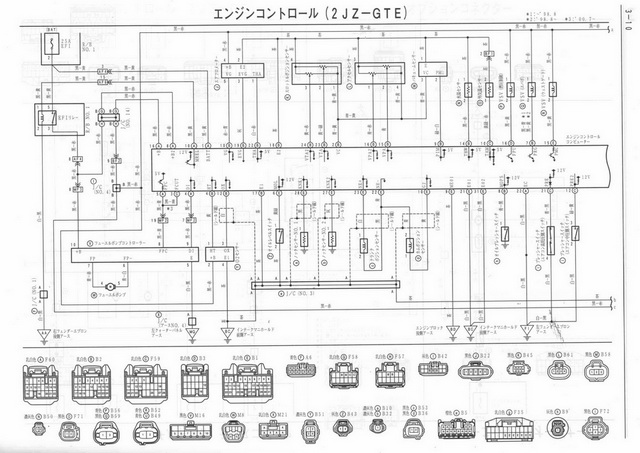
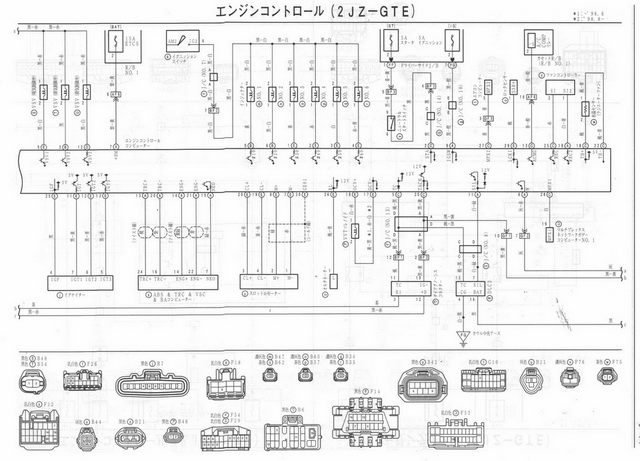
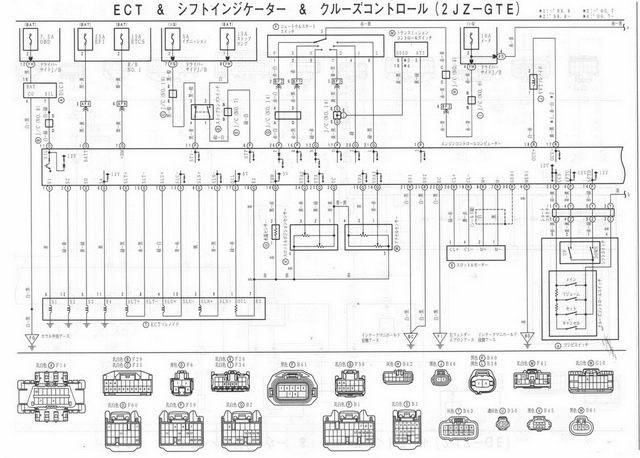
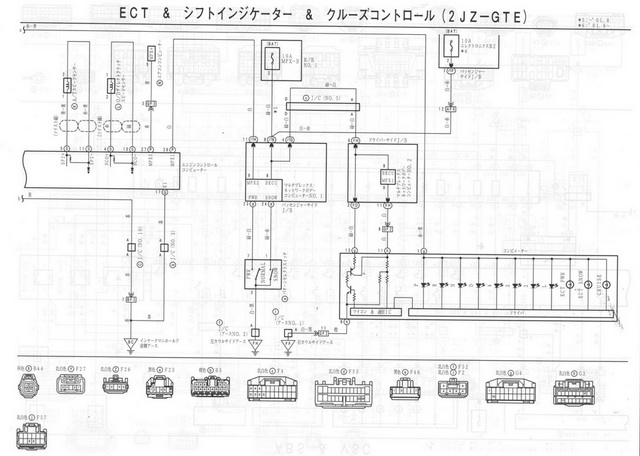


 16.5.2012, 23:08
16.5.2012, 23:08







 Разъем B1:
Разъем B1:


 17.5.2012, 0:53
17.5.2012, 0:53







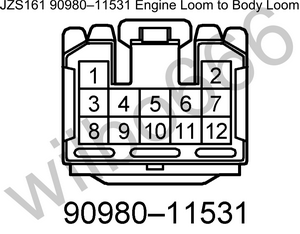 BF1
BF1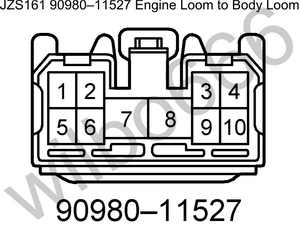 BF2
BF2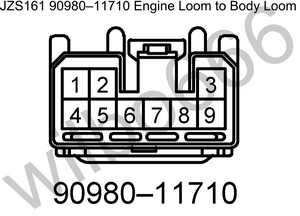 BF3
BF3

 17.5.2012, 1:15
17.5.2012, 1:15









 22.1.2016, 20:00
22.1.2016, 20:00







